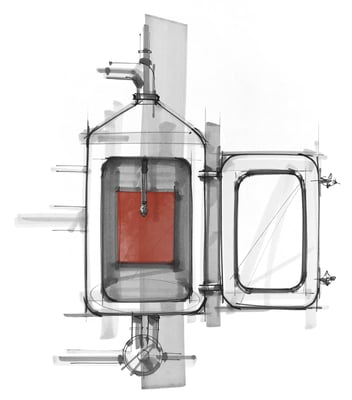The Case of the Disappearing Pellets
I’d like to think of myself as something of a problem solver, which is why, even during my Pharmaceutical career, I chose to work in departments dedicated to helping Pharmaceutical production like Tech Transfer and Technical Services. Nothing gave me more job satisfaction than when we, as a team, could go to the root of the problem Production faced and weed it out instead of temporarily fixing it, knowing that it will come up again sooner or later. As the production is the heart of any industry, it was important for me to make sure that it keeps beating, uninterrupted.
"As the production is the heart of any industry, it was important for me to make sure that it keeps beating, uninterrupted."
However, that was when I was just out of college with theoretical knowledge and didn’t have enough experience to ensure that there were absolutely no stoppages. Issues happened and they were resolved. The more I saw, the more I learned and made sure that it didn’t repeat (and I am still learning). Looking back, I feel that there were some things that I could have done better.
One such incident occurred when I was observing a transfer batch during validation. It was a pellet coating process in a bottom spray fluidized bed with an enteric polymer. While I was making sure that the process was ongoing without any glitches, half the batch disappeared as I watched through the view window within 5 seconds!!! The operator, who was now scared for his job, stopped the process and I called in the Production and Quality heads. We asked the Engineering team to check the Exhaust ducts and there it was – a slush of pellets of a high-value product that couldn’t be salvaged anymore!
Then began the fervent Root-Cause analysis. Out came the Fishbones, the Failure Mode and Effects Analysis (FMEA), and finally the 5-Why method.
|
Why did the product fly away? |
Because the filter bag ruptured |
|
Why did the filter bag rupture? |
Because of the high differential pressure (difference in pressure on either side of the filter) |
We did good till here, but we couldn’t find our next WHY, so we changed tracks:
|
Why didn’t the alarm ring & the machine stop? |
As the sensitivity of the particulate sensor was low |
|
Why was the sensitivity low? |
Because it was changed to stop frequent stoppages |
And we stopped there with the corrective action to increase sensor sensitivity to the highest and lock it to avoid it being changed by operators. But did we really address the problem? No. Instead, we increased the frequency of stoppages for all processes on that equipment, which caused a lot of delays and batch failures, especially for modified-release products.
If I were to work on this problem today, I would have a different Root Cause Analysis chart:
|
Why did the product fly away? |
Because the filter bag ruptured |
|
Why did the filter bag rupture? |
Because of the high differential pressure combined with a weak spot in the filter bag |
|
Why was the differential pressure high? Why did the filter bag have a weak spot? |
This was the third batch and 6th lot of the campaign and though the filter was cleaned after each batch, it was ineffective. It was done so with hot water and high-pressure spray, damaging and weakening the filter bag. The pores were partially blocked and this caused the increased pressure differential that lead to the rupture of the filter bag at its weak spot |
By the 3rd right WHY, we would have had the actual Root Cause. It was obvious that ineffective cleaning of the enteric polymer was the cause of this issue and as a corrective measure, we should have increased filter bag cleaning frequency, eliminated harsh high-pressure cleaning, and employed efficient cleaning of the filter bag with a detergent that didn’t cause shrinkage or damage of the filter bag.
Recently, when I was studying Chematic L/S Plus for efficient cleaning of Enteric Polymers such as Eudragit L & S series, I remembered the ruptured filter bag incident and conducted studies to check the detergent compatibility on different filter bags. I was happy to see that they were easily cleaned in a washing machine with Chematic L/S Plus without the need to pressure wash with shrinkage no more than what we would expect with plain water and absolutely no damage on close examination.
Cleaning Activity is an essential step in any process and should be considered on equal grounds as all other procedures, as an incorrect Cleaning could lead to issues that are never thought of, like the disappearing pellets!



.jpg?width=352&name=Chematic_Containers_01%20(1).jpg)